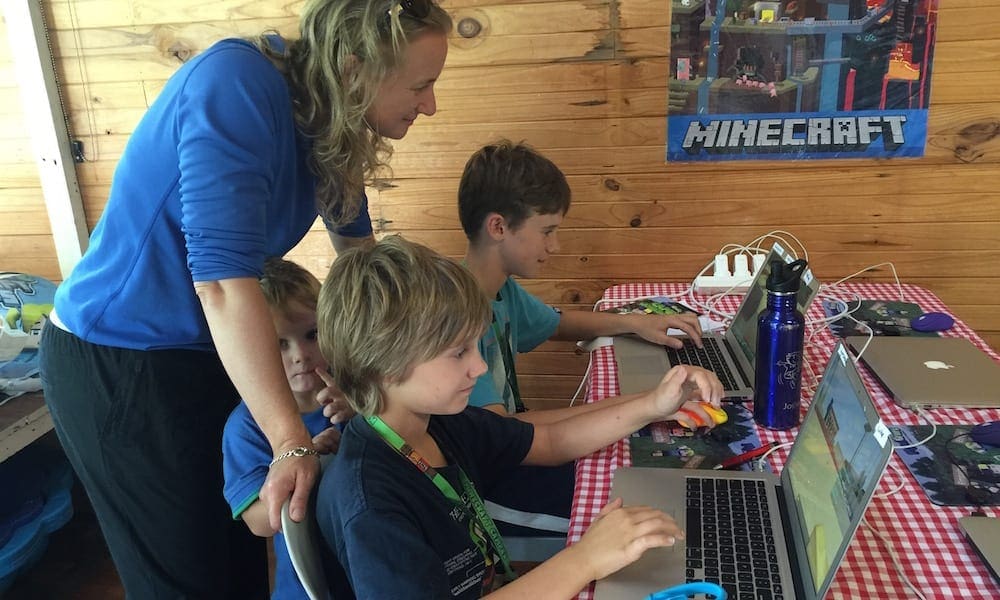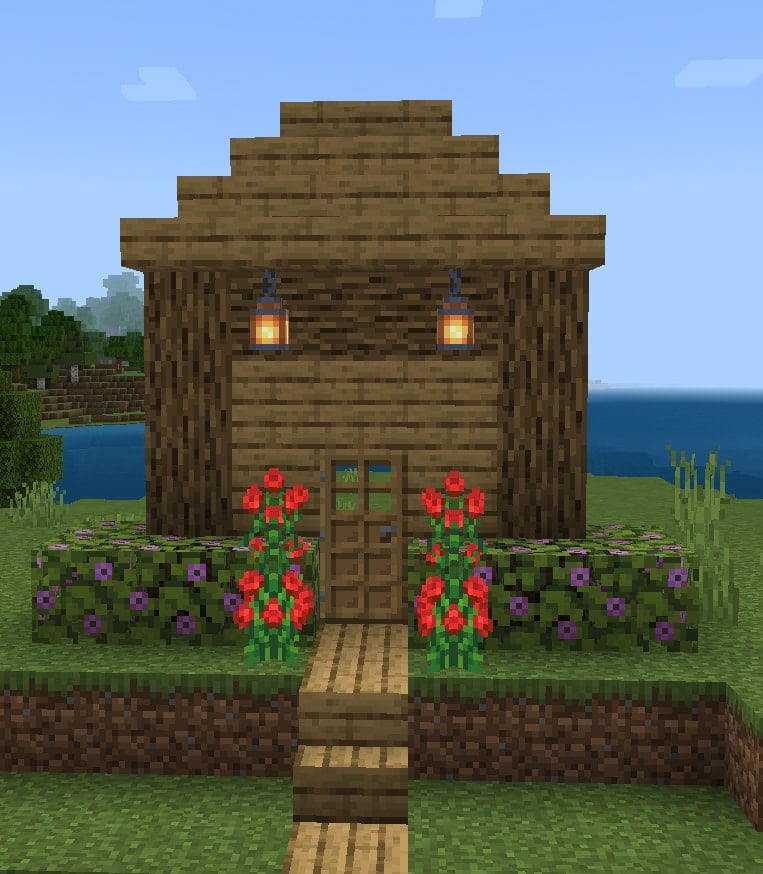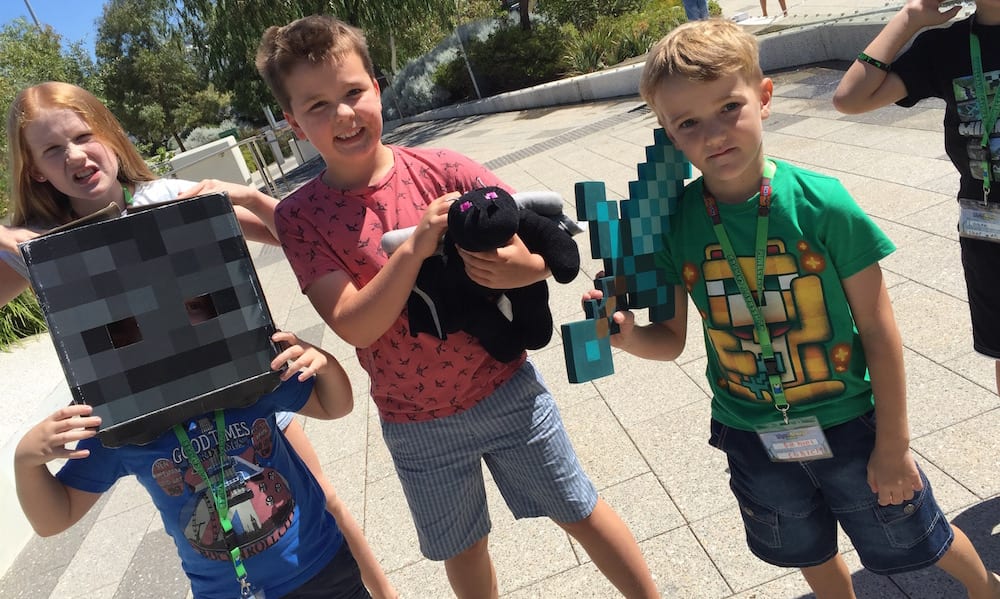If you hear about Minecraft in schools and are wondering why on earth educational establishments would let kids play computer games during school hours, this article is for you! Covered here is all you need to know about Minecraft education in schools, and how it’s likely to affect your children – or pupils.
While reading you’ll discover what kids and Minecraft is all about. Including how the name reflects what happens when playing. You’ll also find out about the editions of Minecraft that are available – including the Minecraft Education Edition – before moving onto all the pros and cons of playing Minecraft.
Frequently asked questions about Minecraft in schools are also addressed further down the page. Including whether or not Minecraft is authorised by the Australian Curriculum, Assessment and Reporting Authority (ACARA), the reasons why it’s used, and whether it’s free or paid.
This article also outlines why Microsoft Minecraft Education can build children’s skills in a broad range of areas. These include those all-important STEM skills. As well as a few subjects you might not have expected them to learn with Minecraft Education.
Minecraft in schools – what you should know
Playing Minecraft in schools really is a thing. For a simple, jargon-free introduction to Minecraft for education, read on!
A brief introduction to Minecraft
If you’re wondering what Minecraft is and does, then you don’t need to ponder any longer! Here’s a brief introduction to the world of Minecraft.
Put simply, some describe Minecraft as LEGO® in computer game form. The game is based around building blocks. Players enter a three dimensional, virtual world where they can break apart and build with blocks.
The mining part of the name is reflected in the fact that players can mine down beneath the surface to source more materials. As for crafting, that refers to the game’s purpose as a platform for creativity. Minecraft players can build what they want to and make their own world, and can use their imaginations to embark on exciting adventures.
Minecraft Editions
Minecraft Education Edition
The Minecraft Education Edition is used within schools to facilitate learning. Playing this version of the game in particular is believed to develop various skills in pupils. These include problem solving, teamwork and creativity.
There are in fact many benefits to playing Minecraft Education. It can develop kids’ STEM skills in the subjects of science, technology, engineering and mathematics. Young Minecraft players may also become better at life skills such as survival, research, budgeting, communication and reading.
One of the best things about Minecraft Education is that it doesn’t feel like learning, to kids, in the traditional sense. They just enjoy playing it. They won’t even realise that they’re learning throughout the process.
Minecraft Classic
Minecraft Classic is a free – but more limited – version of Minecraft. It’s not for keen fans, as any progress made will be lost as soon as the game is closed. Players can explore the world of Minecraft with up to nine of their friends here, though, thus getting a feel for what the game is all about before deciding to purchase it.
Minecraft Witchcraft and Wizardry
As you might expect, Minecraft Witchcraft and Wizardry is one for the Harry Potter fans. This downloadable map is based on the world created by Harry Potter author J. K. Rowling. Players using this mode can enter the world of wizardry and witchcraft, doing activities like blending potions, flying a broomstick and unlocking magical spells.

Minecraft advantages and disadvantages
Whether you’re wondering about the pros of the game or why Minecraft should not be in schools as part of the curriculum, here’s a list of all the good and not-so-great things about Minecraft.
14 Minecraft Pros
Minecraft teaches kids to work as a team
By communicating and collaborating with one another, pupils clearly see that teamwork means they can achieve much more. Creating a new map, for example, is much simpler when children work together than when trying to take on this task alone.
Minecraft develops problem-solving skills
While playing, kids will overcome obstacles and thus learn how to solve problems. They’ll also learn to think and react quickly, which is an important life skill.
Minecraft can hone kids’ communication skills
Children who play have to communicate with the other members of their team, which includes creating and typing messages. This helps them to become effective communicators.
Minecraft can encourage research
This is because kids will be keen to discover any tips and tricks that might help them make progress. Doing this kind of research is exactly what many school assignments and projects are all about!
Minecraft can provide reading practice
Written guides are all part of the game, which is why kids who play Minecraft get more reading practice in. They may also need to read messages from their team while playing.
Minecraft can also help with maths
Using shapes, manipulating blocks and solving geometric problems can give Minecraft players a head start when it comes to grasping mathematical concepts.
Minecraft can make kids think
A far cry from the industry standard, Minecraft does not hold your hand when you first load the game. Many programmers complain that although computers are much easier to use, they have also been dumbed down. Audaciously, Minecraft embraces the early days of controlling a computer from the command line, where text was used rather than pointing and clicking. Players of all ages will master chains of sophisticated syntax, getting properly hands on with the technical aspects of software.
Minecraft can act as an introduction to coding
The command blocks used in the game can be altered to change how the game unfolds. If that’s not enough, keen coders might even like to test out modifying Java code or de-bugging at some point in the future.
Minecraft unleashes children’s creativity
The sky’s the limit when it comes to what kids can create while playing Minecraft. As with LEGO®, the only restriction is that building blocks must be used when realising their vision.
Minecraft develops STEM skills
In the present-day workplace, a sound grounding in science, technology, engineering and mathematics is essential.
Minecraft can help with this too, and in the long term having these skills will enhance their employment prospects.
Minecraft players may be better at budgeting.
The game requires kids to ‘pay’ for certain tools and equipment, which may make a task easier. Weighing up the cost and efficiency can help kids to understand why budgeting is so important in real life.
Minecraft can sharpen survival skills
Playing Minecraft – especially in the night time mode – will make kids think about how to overcome obstacles. Not only will they learn to survive, they might also even thrive in challenging circumstances.
Minecraft Worlds can educate in other ways
Entering the Minecraft Education worlds can teach kids about history, geography and other topics. The subject matter varies according to the worlds they engage with.
Kids love Minecraft
In fact they adore it so much that many end up asking their parents for Minecraft-themed birthday parties or even Minecraft bedroom decor! What could be better than Minecraft Education games that teach them various skills without them even realising?
6 Minecraft Cons

Minecraft might cost parents money
If they enjoy playing it at school, then it’s likely that your kids will badger you to purchase the version they can play at home. As with all computer and console games, there is a cost involved in buying the Minecraft game.
Minecraft can be addictive
As with many video games, some players will be drawn so far into the Minecraft world that they may become addicted to or obsessed by the game. This could be to the detriment of other activities, such as sports or homework.
Your child may end up watching YouTubers like Ratkidz or Platabush instead, who specialise in Minecraft animation.
Minecraft isn’t suitable for younger kids
It’s recommended that Minecraft is played under supervision, as per Australian Classification guidelines. There is some mild violence. Children and Media Australia states that the game is only suitable for players aged 9 plus – and then only under parental guidance.
Minecraft may expose kids to cyber-bullying, scams or grooming
As with any online activity, the dangers posed by scammers, bullies and people who aren’t who they say they are can loom large. Keep a close eye on what kids are doing and warn them what to steer clear of if they’re playing Minecraft at home. At school, though, remember that they’ll have their Minecraft teacher to keep an eye on things.
Minecraft creepers cause destruction – and frustration
Creepers are hostile creatures which can explode after approaching a player’s carefully constructed blocks. When they do blow up, everything around them is blasted to oblivion. Which can be extremely frustrating for players of any age! This can lead to outbursts of anger from certain individuals.
Minecraft uses a lot of resources
Don’t be fooled by Minecraft’s somewhat elementary appearance. It’s actually a power-hungry sandbox game that demands a lot from a computer, console or other device. Older devices may not really work very well with Minecraft for this reason.
Minecraft in schools FAQs

What does Minecraft teach you?
So what are the benefits of Minecraft, and what does playing the game teach you? Playing Minecraft Education Edition has been developed to sharpen the skills of school pupils in certain areas. Playing Minecraft can develop problem solving skills, and can encourage collaboration and creativity.
Minecraft can in fact develop all sorts of skills in younger players. Depending on how much time they spend playing the game and in what mode/s, kids can learn more from Minecraft than creativity, teamwork and problem solving.
Minecraft players may also become better at budgeting, survival, reading, communication and research. Their STEM skills in subjects based around science, technology, engineering and mathematics can also be honed by playing a game.
One of the best things about Minecraft is that kids will simply enjoy playing it. They won’t even realise that the game is actually educating them at the same time.
Is Minecraft Education Edition free?
Is using Minecraft for education free, or paid? This educational tool is available for free on a trial basis, so educators can test it out without commitment. There are two ways to get the free Minecraft Education Edition to try it out – via a demo lesson, or by signing up for a free account.
You will need either a Microsoft 365 account or an Office 365 Education account to sign up for an account. This allows access to the free trial. With an Office 365 Education account you get 25 trial logins, or 10 with a regular Microsoft 365 account.
Once the free trial has expired, to get the full Minecraft Education unblocked costs around USD $5 per year, per player. (Do note that the amount may vary by local currency, or can change at any time.) For those who aren’t part of an eligible educational establishment, the Minecraft Education edition cost is over double – about USD $12 per year, per user.
Is Minecraft used in Australian schools?
Is Minecraft taught in school – and in fact is Minecraft appropriate for school? Do schools use Minecraft, and if so, why? Indeed they do – Minecraft is approved by the The Australian Curriculum, Assessment and Reporting Authority (ACARA).
Minecraft Education is used within Australian schools. Various resources are supplied for educators who wish to use Minecraft Education Edition online in the classroom. These include a ten-module course on how to use it within teaching, and downloadable content to help teachers who want to include it in the curriculum. This is all supplied by the Minecraft Academy.
Minecraft in schools summary
The use of Minecraft in schools can be a very good thing. Playing Minecraft Education online can develop children’s skill sets. Kids who play Minecraft in the classroom are doing so safely and under supervision.
By playing Minecraft with their school friends, kids can become better communicators, readers, mathematicians, researchers, problem solvers and team players. The game can also encourage and facilitate creativity, and it may even engender an interest in coding or set the groundwork for good budgeting skills.
Here in Australia, Minecraft is approved by the The Australian Curriculum, Assessment and Reporting Authority (ACARA). This means the game is deemed suitable for use in schools and for inclusion in the curriculum.
Clever Minecrafters can develop their skills in science, technology, engineering and mathematics. By playing at school, the cons of playing Minecraft are also minimised. This is because it’s played in a controlled, supervised environment and only for limited periods of time.
With all they have to gain, the pros of Minecraft in the classroom far outweigh the cons. What’s not to love about a game that teaches kids numerous skills – in a way they’ll thoroughly enjoy? If you’re still not convinced, why not let a university professor have the last word?
“In Minecraft, knowledge becomes social currency,” says Michael Dezuanni, an associate professor at the Queensland University of Technology. Studying middle-school girls playing the game, he noticed their nuanced analysis of in-game creations. Sharing discoveries with one another became imperative. This is the game’s draw: it offers many chances for one to display their knowledge and share their expertise with peers.

